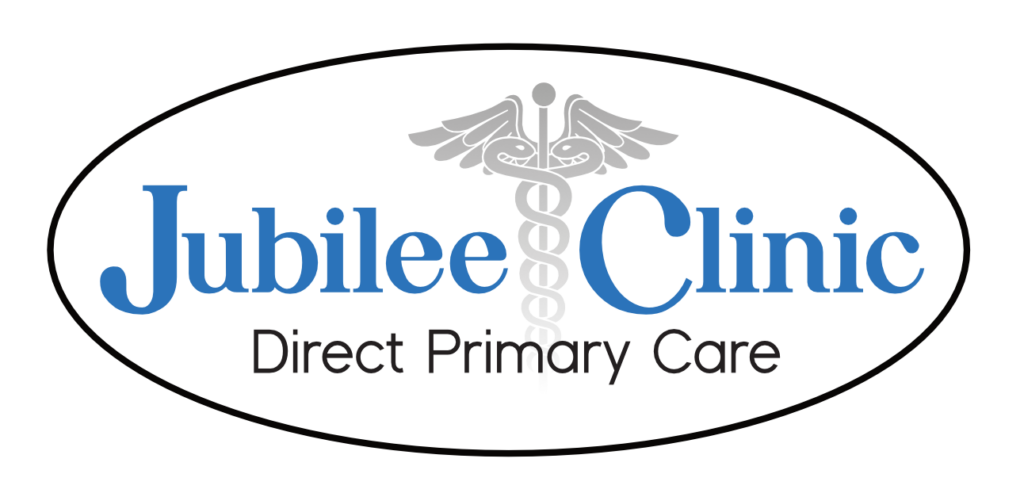What is Direct Primary Care?
Did you know that over 2,400 practices across the U.S. now operate under the direct primary care model? This innovative approach is transforming how patients access healthcare by eliminating the complexities of traditional insurance.
In this model, patients pay a flat monthly fee, typically ranging from $50 to $150, for comprehensive primary care services1. Unlike traditional insurance, this subscription-based system allows physicians to focus on patient care rather than administrative tasks.

The DPC model fosters stronger patient-physician relationships by offering extended visits and real-time access to doctors. It’s designed to improve health outcomes while reducing overall costs, making it a preferred choice for many.
Key Takeaways
- DPC replaces traditional insurance with a subscription-based model.
- Monthly fees range from $50 to $150, depending on age and services.
- Patients enjoy longer appointments and better access to their doctors.
- The model reduces administrative burdens for physicians.
- It’s gaining popularity across the U.S., with over 2,400 practices.
Overview of the
Direct Primary Care Model
The subscription-based approach in healthcare is reshaping how patients access medical services. This system replaces traditional insurance with a straightforward, flat monthly fee. Patients gain access to a wide range of primary care services without the hassle of copays or deductibles.
How Direct Primary Care Works
Patients pay a flat monthly fee instead of dealing with
insurance complexities.
No co-pays, deductibles, or surprise bills—everything
is transparent.
Covers routine checkups, preventive care, and direct doctor access.
Doctors focus on patient care, not paperwork.
Subscription-Based Membership Explained
Membership fees typically range from $50 to $150 per month, depending on age and services included4. This fee covers routine checkups, preventive care, and direct doctor access, including in-person or virtual appointments. Physicians can focus on delivering quality care rather than navigating insurance paperwork.
This model also allows providers to negotiate lower rates for diagnostic tests and medications, passing the savings on to patients. It’s a win-win for both parties, fostering a simplified and transparent relationship.
Focus on Primary and Preventive Care
One of the standout features of this approach is its emphasis on preventive care. Physicians have more time to address chronic conditions and focus on long-term health management5. Patients benefit from extended appointments, often lasting 30 to 90 minutes, compared to the traditional 19.2-minute average.
By eliminating the administrative burden of insurance claims, providers can dedicate more time to their patients. This leads to stronger relationships and better health outcomes.
What is Direct Primary Care (DPC)?
A membership-based healthcare model that provides direct doctor access, longer appointments, and personalized care—without the hassle of insurance.
A growing number of Americans are turning to a simplified healthcare model that cuts out the middleman. This approach focuses on providing primary care services without the complexities of insurance. Instead, patients pay a flat monthly fee, typically ranging from $50 to $150, for unlimited access to their physician.

Definition and Key Features
This model operates on a subscription basis, where patients receive comprehensive primary care without copays or deductibles. Physicians can focus solely on patient needs, offering extended appointment times and personalized attention. This fosters stronger relationships and better health outcomes.
Unlike traditional practices, this system eliminates third-party billing. Physicians interact with smaller patient panels, allowing for more time per visit. This shift reduces administrative burdens and improves overall practice efficiency.
How the DPC Model Operates
The model simplifies healthcare by removing insurance from the equation. Patients pay a periodic fee, and in return, they gain access to a wide range of services. This includes routine checkups, preventive care, and unlimited consultations.
Physicians benefit from reduced paperwork and can negotiate lower rates for tests and medications. This cost-saving is often passed on to patients, making healthcare more affordable and transparent. For more details on how this model works, visit the American Academy of Family Physicians.
By focusing on primary care, this model addresses the shortage of physicians and improves access to quality healthcare. It’s a win-win for both patients and providers.

DPC is a subscription-based healthcare model
Where patients pay a flat monthly fee instead of using insurance.

No copays, no deductibles, no hidden fees
Everything is simple and
transparent.

Longer Appointments
More time with your doctor (30-90 minutes).

More personalized, accessible care
with direct doctor access via calls, texts, or video chats.

Benefits of the DPC Model
The DPC model offers a streamlined approach to healthcare, focusing on patient needs and reducing unnecessary complexities. This innovative system prioritizes quality over quantity, ensuring better health outcomes and lower overall costs.
Personalized Patient Care and Extended Appointments
One of the standout features of this model is its emphasis on personalized care. Physicians spend an average of 30 to 60 minutes per visit, compared to the traditional 12 to 15 minutes This allows for in-depth consultations and better management of chronic conditions.
Patients benefit from extended appointment times, fostering stronger relationships with their doctors. This personalized approach leads to improved health outcomes and higher satisfaction rates.
Reduced Administrative Hassles for Providers
Providers experience significant reductions in paperwork and regulatory compliance tasks. Nearly 30% of a physician’s time is typically consumed by administrative work, but this model cuts that burden by up to 40%.
With fewer administrative tasks, doctors can focus more on patient care. This streamlined workflow enhances job satisfaction and improves overall practice efficiency.
Table: Concierge vs. Fee-for-Service vs. DPC
| Aspect | Traditional Care | DPC Model |
|---|---|---|
| Appointment Length | 12-15 minutes | 30-60 minutes |
| Administrative Burden | High | Reduced by 40% |
| Patient Satisfaction | Moderate | High |
Drawbacks and Challenges of Direct Primary Care
While the DPC model offers many advantages, it’s not without its challenges. Patients and providers must weigh these drawbacks to determine if this approach aligns with their needs and expectations.
Financial Considerations and Membership Fees
One of the primary concerns is the upfront cost of membership fees. These fees, typically ranging from $50 to $150 per month, can be a financial burden for some individuals, especially those with limited budgets10. Unlike traditional insurance, these fees do not contribute toward deductibles, which can lead to additional out-of-pocket costs for specialist visits or hospitalizations.
Additionally, membership fees may not qualify for Health Savings Accounts (HSAs), limiting potential tax benefits. For infrequent visitors, the upfront cost could exceed those of traditional insurance plans, making it less appealing.
Coverage Limitations for Major Health Events
Another significant drawback is the lack of coverage for major health events. The DPC model focuses on primary care and preventive services but does not include hospitalizations, surgeries, or specialist treatments. Patients often need supplemental high-deductible health plans or insurance to cover these expenses, which can add to the overall cost.
This limitation can create a gap in healthcare access, particularly for individuals with chronic conditions or those requiring frequent specialist care. It also raises concerns about the model’s ability to meet the requirements of the Affordable Care Act (ACA) in certain locations.
Potential Conflicts of Interest
There’s also a potential conflict of interest where healthier patients may be favored over high-need individuals. Physicians might prioritize patients who require less intensive care, as this reduces their workload and costs. This dynamic could limit access for those who need it most, undermining the model’s goal of equitable healthcare.
- Monthly fees can be a financial burden for some patients.
- DPC does not cover major health events, requiring supplemental insurance.
- Healthier patients may be favored, creating access disparities.
While the DPC model simplifies healthcare for many, these challenges highlight the need for careful consideration. Patients and providers must evaluate their unique circumstances to determine if this approach is the right fit.
Comparison with Traditional Primary Care Approaches
Healthcare delivery models are evolving, and Direct Primary Care stands out as a unique alternative to traditional approaches. Unlike concierge medicine or fee-for-service models, DPC focuses on affordability, transparency, and patient-centered care. This section explores how DPC differs from these models and why it’s gaining traction
Potential Conflicts of Interest
Concierge medicine and DPC both offer personalized care, but their cost structures and service models differ significantly. Concierge practices often charge annual fees ranging from $1,500 to $25,000, while DPC fees average $50 to $150 per month. This makes DPC more accessible to a broader audience.
Another key difference is the focus on insurance. Concierge practices may still bill insurance for services, whereas DPC eliminates insurance entirely, reducing administrative burdens. Patients in DPC practices also enjoy more one-on-one time with their providers, leading to better care outcomes.
Reduced Administrative Hassles for Providers
Providers experience significant reductions in paperwork and regulatory compliance tasks. Nearly 30% of a physician’s time is typically consumed by administrative work, but this model cuts that burden by up to 40%.
With fewer administrative tasks, doctors can focus more on patient care. This streamlined workflow enhances job satisfaction and improves overall practice efficiency.
DPC’s value proposition lies in its simplicity and focus on patient needs. By eliminating insurance complexities, it offers a transparent and cost-effective alternative to traditional models. Patients benefit from better access to care, while providers enjoy reduced administrative tasks.
Comparison with Traditional Primary Care Approaches
Healthcare access and patient relationships are significantly transformed under the DPC model. This approach prioritizes timely care and fosters stronger connections between doctors and patients, improving overall health outcomes.
Enhanced Access to Routine and Preventive Care
DPC practices reduce waiting times for appointments, ensuring patients receive timely care. With smaller patient panels, physicians can dedicate more time to each individual, focusing on preventive measures and chronic condition management.
Studies show that DPC participants spend twice as much time with their doctors compared to traditional clinics. This extended interaction allows for thorough consultations and better health monitoring, leading to improved quality of care.
Strengthening the Doctor-Patient Bond
The DPC system emphasizes personalized care, fostering trust and communication between patients and providers. Patients report higher satisfaction levels, with 99% praising the accessibility and overall experience.
This model also reduces administrative burdens, allowing physicians to focus on building relationships rather than paperwork. The result is a more patient-centered approach that enhances both care delivery and outcomes.
Table: Traditional Care vs. DPC (Patient Perspective)
| Aspect | Traditional Care | DPC Model |
|---|---|---|
| Cost | Days to weeks | Same or next day |
| Appointment Wait Time | 12-15 minutes | 30-60 minutes |
| Time with Physician | Moderate | High (99%) |
By prioritizing access and relationships, the DPC model reshapes the healthcare landscape. It offers a more efficient and patient-friendly system, benefiting both individuals and the broader medicine community.
Administrative Benefits and Reduced Burdens
Physicians across the U.S. are embracing a model that reduces administrative tasks and enhances patient care. By eliminating insurance-related paperwork, this approach allows providers to focus on what truly matters—building strong patient relationships and delivering quality care.
Minimizing Insurance Paperwork and Pre-Approvals
Traditional healthcare systems often require extensive paperwork and pre-approvals for treatments. This model simplifies the process by removing third-party payers, reducing the need for claims processing. Physicians can dedicate more time to patient visits, ensuring thorough consultations and better health outcomes.
Studies show that practices adopting this model experience a 40% reduction in administrative tasks. This efficiency translates into lower overhead costs and improved practice management. Patients also benefit from transparent payment structures, eliminating surprise bills and fostering trust.
Improving Physician Job Satisfaction
Reducing administrative burdens has a direct impact on physician well-being. With fewer paperwork demands, providers experience less burnout and higher job satisfaction. This positive work environment enhances the quality of care and strengthens patient-provider relationships.
Operational efficiencies are further achieved through streamlined payment systems. Direct monthly fees eliminate the complexities of billing and collections, allowing practices to focus on delivering exceptional care.
Table: Traditional Model vs. DPC (Physician Perspective)
| Aspect | Traditional Care | DPC Model |
|---|---|---|
| Paperwork | High | Low |
| Administrative Tasks | 30% of time | Reduced by 40% |
| Patient Visits | 12-15 minutes | 30-60 minutes |
By prioritizing efficiency and transparency, this model reshapes healthcare delivery. It offers a sustainable solution for providers and a better experience for patients.
Financial and Insurance Implications in DPC
The financial structure of Direct Primary Care offers a transparent and predictable way for patients to manage healthcare costs. With fixed monthly fees ranging from $50 to $150, patients gain access to unlimited primary care visits without the hassle of copays or deductibles. This model provides crucial insight into how healthcare can be simplified and made more affordable.
One of the key benefits of this approach is its cost transparency. Patients know exactly what they’re paying for, eliminating surprise bills or hidden fees. However, this model does not cover major medical events, requiring patients to secure additional coverage for specialized services. This combination of DPC with high-deductible health plans (HDHPs) ensures comprehensive care while keeping costs manageable.
Cost Transparency and Membership Structures
While DPC covers routine and preventive care, it does not include hospitalizations or major surgeries. Patients often need supplemental insurance to handle these expenses. This dual approach—combining DPC with high-deductible plans—provides a balanced solution for both everyday and emergency healthcare needs.
Research shows that DPC practices generate $137 more in net income per patient per year compared to traditional fee-for-service models. This financial sustainability benefits both providers and patients, making DPC an attractive option for those seeking cost-effective healthcare solutions.
Supplemental Insurance and Financial Sustainability
While DPC covers routine and preventive care, it does not include hospitalizations or major surgeries. Patients often need supplemental insurance to handle these expenses. This dual approach—combining DPC with high-deductible plans—provides a balanced solution for both everyday and emergency healthcare needs.
Research shows that DPC practices generate $137 more in net income per patient per year compared to traditional fee-for-service models. This financial sustainability benefits both providers and patients, making DPC an attractive option for those seeking cost-effective healthcare solutions.
Table: DPC vs. Traditional Insurance (Financial Perspective)
| Aspect | Traditional Care | DPC Model |
|---|---|---|
| Monthly Cost | $117 (average premium) | $50-$150 |
| Coverage | Comprehensive (major events included) | Routine & preventive care |
| Administrative Burden | High | Low |
| Patient Satisfaction | Moderate | High |
For more insight into how DPC integrates with insurance plans, visit this detailed guide. This resource explains how patients can benefit from combining DPC with traditional insurance for comprehensive coverage.
Future Perspectives and Conclusion
The future of healthcare is evolving, with innovative models gaining traction among providers and patients alike. The adoption of subscription-based healthcare continues to grow, driven by its ability to address key issues in traditional systems. Physicians are increasingly drawn to this model due to its focus on reducing administrative burden and enhancing patient relationships.
Boosting Satisfaction for Doctors and Patients
As more primary care practices transition to this approach, patients benefit from improved access and personalized care. This shift is supported by data showing higher physician satisfaction and better health outcomes22. The streamlined structure allows providers to focus on delivering quality care, rather than navigating complex health insurance systems.
Better Access and Personalized Care
For patients, this model offers a transparent and cost-effective alternative to traditional health plans. By combining this approach with supplemental coverage, individuals can manage both routine and major medical needs efficiently23. This dual strategy ensures comprehensive care while keeping costs predictable.
Transparent and Affordable Healthcare
Looking ahead, the continued growth of this model highlights its potential to reshape healthcare delivery. Providers and patients alike can benefit from its focus on simplicity, transparency, and patient-centered care. This evolution marks a significant step toward a more sustainable and effective healthcare system.
Financial and Insurance Implications in DPC
The future of healthcare is evolving, with innovative models gaining traction among providers and patients alike. The adoption of subscription-based healthcare continues to grow, driven by its ability to address key issues in traditional systems. Physicians are increasingly drawn to this model due to its focus on reducing administrative burden and enhancing patient relationships.

Boosting Satisfaction for Doctors and Patients

As more primary care practices transition to this approach, patients benefit from improved access and personalized care. This shift is supported by data showing higher physician satisfaction and better health outcomes. The streamlined structure allows providers to focus on delivering quality care, rather than navigating complex health insurance systems.
Better Access and Personalized Care

For patients, this model offers a transparent and cost-effective alternative to traditional health plans. By combining this approach with supplemental coverage, individuals can manage both routine and major medical needs efficiently. This dual strategy ensures comprehensive care while keeping costs predictable.


Transparent and Affordable Healthcare

Looking ahead, the continued growth of this model highlights its potential to reshape healthcare delivery. Providers and patients alike can benefit from its focus on simplicity, transparency, and patient-centered care. This evolution marks a significant step toward a more sustainable and effective healthcare system.
Frequently Asked Questions
Find answers to your most pressing questions about our services and membership.
What distinguishes the DPC model from traditional primary care?
The DPC model eliminates insurance billing, offering personalized care with extended appointments and reduced administrative burdens for providers.
What are the key benefits of choosing a DPC practice?
Patients enjoy enhanced access to their physician, transparent pricing, and a stronger doctor-patient relationship focused on preventive care.
Are there any drawbacks to the Direct Primary Care approach?
While DPC offers many advantages, it may not cover major health events or emergencies, requiring patients to maintain separate insurance for such situations
How does DPC differ from concierge medicine?
Unlike concierge medicine, which often charges higher fees and still bills insurance, DPC operates on a simpler, membership-based structure without insurance involvement.
What impact does DPC have on healthcare access?
The model improves access to routine and preventive care by reducing wait times and fostering a closer relationship between patients and their physicians.
How does DPC reduce administrative burdens for providers?
By bypassing insurance paperwork and pre-approvals, physicians can focus more on patient care and less on administrative tasks.
What financial implications should patients consider with DPC?
Patients benefit from cost transparency through membership fees but should also maintain insurance for coverage of major health issues or emergencies.
Is the DPC model gaining popularity among physicians?
Yes, more physicians are adopting the DPC model due to its focus on patient-centered care and reduced administrative complexities.
How does DPC strengthen the doctor-patient relationship?
With extended appointment times and a focus on preventive care, DPC fosters trust and better communication between patients and their physicians.

